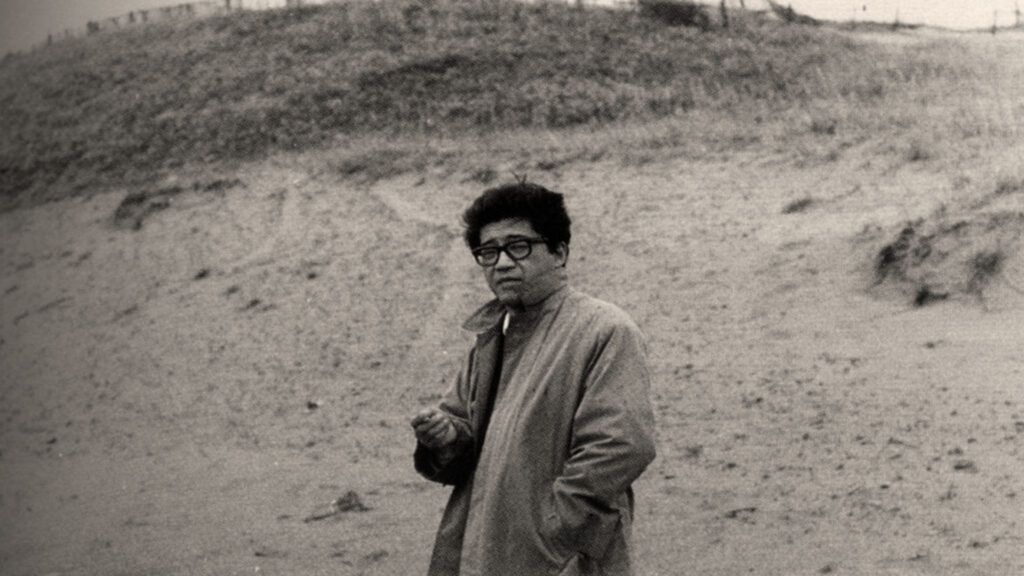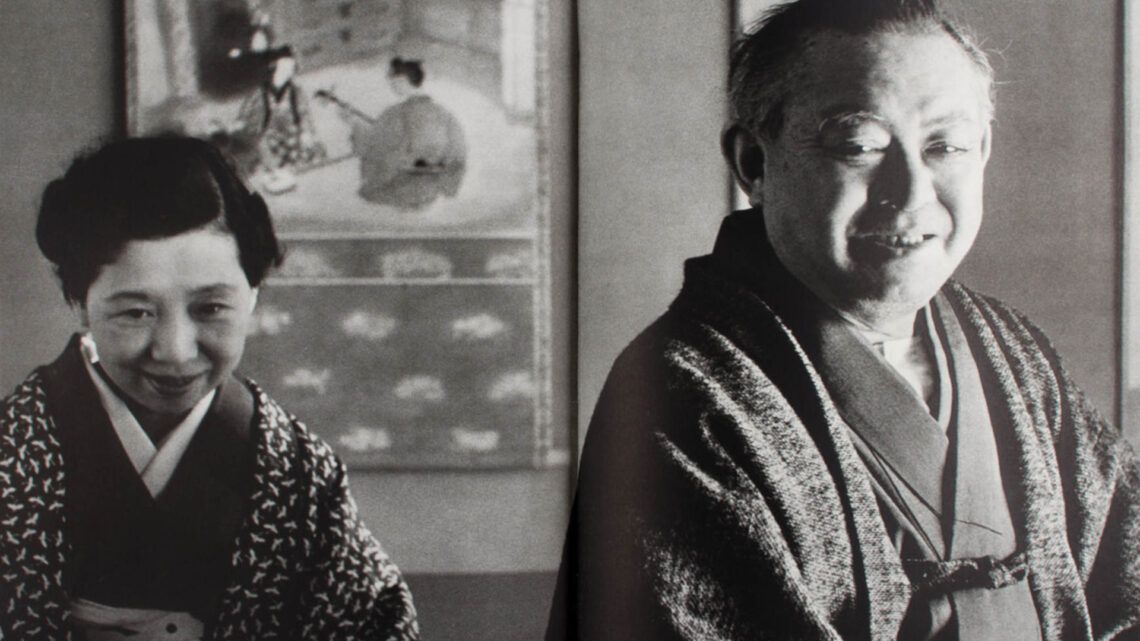
Kobo Abe – The Woman in the Dunes (Suna no onna)
There are books that not only tell a story but literally engulf the reader, immersing them in a world that is simultaneously fascinating and oppressive, making it impossible to break free. Kobo Abe’s “The Woman in the Dunes” is undoubtedly such a book. This literary masterpiece takes the reader on a journey that leads not only through the endless expanses of a seemingly lifeless landscape but also delves deep into the abysses of human existence.
Kobo Abe’s story “The Woman in the Dunes” was one of the decisive factors for me to deal more intensively with Japan and Japanese art. It is a book that has impressed me deeply and which still has an intense effect today. But I will try not to spoil, to give you the opportunity to discover the universe of the plot itself.
For those who already know this book, I can only hope that they can share my opinion.
I’m not necessarily a friend of reviews, as they ultimately say more about the reviewer than the work itself. nevertheless, i would like to introduce you to one of my favorite books. I ask you to forgive my gushing. If you already know the book, it possibly may encourage you to read it again. If not, I recommend it to you.
Kobo Abe was born in Tokyo but grew up in Mukden (Manchuria). In 1941, he returned to Tokyo and studied medicine. Since 1947, he published poems, essays, novels, social criticism, and dramas. He expressed interest in Edgar Allan Poe, Fyodor Dostoyevsky, Friedrich Nietzsche, Martin Heidegger, Karl Jaspers, and Franz Kafka. His first novel, “The Shield at the End of the Street,” was published in 1948. In 1962, he achieved international breakthrough success with the novel “The Woman in the Dunes,” his first novel translated into other languages, and its award-winning film adaptation was released in 1964. Abe Kobo wrote the screenplay for the film himself.
(source: Wikipedia)
About the Story:
The story begins seemingly unspectacularly: the male teacher, Niki Jumpei, sets out to collect beetles in a remote dune landscape. However, this initial normality is quickly woven through with a web of inexplicable events. Jumpei, captivated by the beauty of nature, suddenly finds himself ensnared in a web of deceptions and paradoxical realities. The dunes, which initially only serve as a backdrop, become the stage for an existential drama.
The protagonists, especially Jumpei and the mysterious woman, are so masterfully drawn that their thoughts and actions touch the reader with an almost tangible intensity. One can almost feel the sand slipping through the fingers and the oppressive tightness of the dunes as the story takes one dark turn after another. The ever-growing conflict between the individual and their environment is explored in Abe’s narrative in a way that affects not only the physical but also the spiritual.
“The Woman in the Dunes” is more than just an allegorical tale; it is a meditation on the nature of life, isolation, and survival. Abe manages to blur the boundaries between reality and illusion, forcing the reader to question their own beliefs and perceptions. One is inevitably drawn into a whirlpool of questions without ever having the possibility of finding clear answers.
The language Abe chooses to tell this story is of a poetic beauty that transforms the desolation of the dunes into a fascinating panorama. Every sentence seems to be laden with meaning, and the words themselves become another element of the dune landscape that captivates the reader.
In this seemingly hopeless environment, a psychodrama unfolds, delving deep into our psyche. The dunes not only become a physical prison for the main characters but also symbolize the boundaries imposed by life. The reader witnesses despair, hope, resignation, and resistance as the characters grapple with the unstoppable flow of time.
Amidst the seemingly endless sea of sand, the story of Niki Jumpei and the mysterious woman takes a turn that appears to shatter the fabric of time and space. The rhythm of the dunes becomes an unrelenting beat propelling the characters’ fate forward. The connection between Jumpei and the woman evolves into a delicate yet unsettling symbiosis, captivating the reader. The initially majestic sand waves become a prison of sand grains, crushing the protagonists’ freedom. Here, Kobo Abe’s art is revealed, capturing the reader’s senses with his vivid language.
The psychology of the characters becomes increasingly complex. Jumpei, initially a researcher and dreamer, becomes a prisoner of his own destiny. The woman, initially a mystery, becomes a partner in the struggle for survival. The emotional tension between them steadily rises, and the dunes become a mirror of their inner conflicts.
In this Kafkaesque environment, a dark beauty unfolds, simultaneously fascinating and chilling the reader. It’s a dance on the narrow edge between existence and non-existence, between life and survival. “The Woman in the Dunes” is not just a novel but a poetic meditation on the nature of time, isolation, and the human soul.
The sand, initially innocently crunching under the characters’ feet, becomes a central actor propelling the plot and reflecting the protagonists’ emotions. The dunes become a living organism, breathing and pulsating. The author takes the reader on a sensual journey through the texture of the sand, describing the grains in their fineness, arrangement, hardness, and evanescence.
It’s this attention to detail that makes “The Woman in the Dunes” a sensory experience for the reader. Abe weaves the description of the sand with the thoughts and emotions of the characters, turning every shovelful of sand into an act of self-discovery, every gust of wind into a breath of change. The sand becomes the medium blurring the boundaries between reality and imagination.
It’s this intensity that grips the reader and immerses them in the story. One not only feels the heat of the sand but also the heat of the existential struggle unfolding in the pit beneath the dune. Every sentence, every description becomes a blow, directly hitting the reader and intensifying the emotional resonance.
In the intensity of the sand descriptions, Kobo Abe’s mastery in creating atmosphere shines through. The dunes become a place of extremes—the extremes of the struggle for survival, the extremes of isolation, the extremes of the human psyche. This intensity makes “The Woman in the Dunes” an unforgettable reading experience, resonating long after, like the quiet echo of a sand grain falling in the endless desert.
In the last pages of the narrative, the story reaches its peak—a synthesis of thoughts, feelings, and fates. The reader is led through a rollercoaster of emotions as the dunes reveal their final secrets. Each line leads to an inevitable conclusion, both redeeming and disturbing.
Revealing too much of the plot would be inappropriate, as a significant part of the reading pleasure lies in being swept away by the story without knowing what happens next. It’s an experience that captivates the reader as much as the main characters trapped in the endless dunes.
The philosophical undertones resonating through the book turn it into a literary journey extending far beyond the plot. Questions about the nature of humanity, the meaning of freedom and captivity, the purpose of individual existence, and its symbiosis with others, as well as the connection between humans and nature, weave through the pages, compelling the reader to contemplate. Kobo Abe deliberately avoids simplistic answers.
My Conclusion:
With “The Woman in the Dunes,” Kobo Abe has crafted a timeless masterpiece that transcends the boundaries of an ordinary novel. It challenges the reader, emotionally resonates, and simultaneously captivates with the beauty of language. This story is like a vortex, impossible to escape, leaving a lasting impression that goes beyond mere reading. Abe manages not only to tell a story but to create a world that continues to captivate the reader long after closing the book.
In the dunes, not only the isolated world of the protagonists is revealed but also the infinite complexity of human existence. The reader is taken on a discovery deep into the abyss of their own thoughts. Abe provides no easy answers, but he poses the right questions, inviting the reader to find their own answers. “The Woman in the Dunes” is therefore not just a book but an experience not easily forgotten.
Your Candahashi



